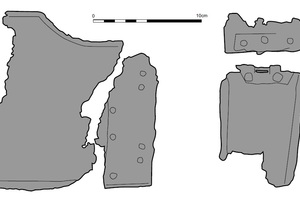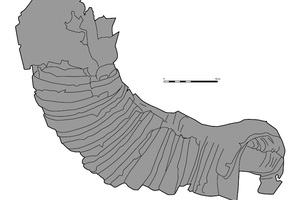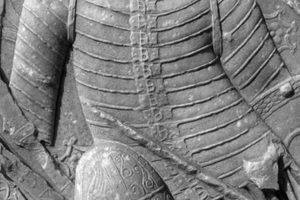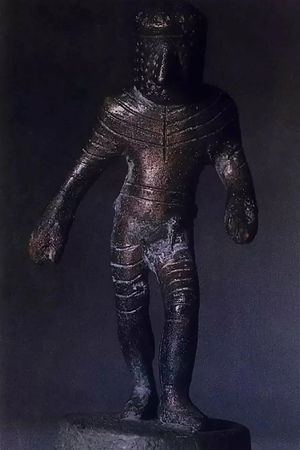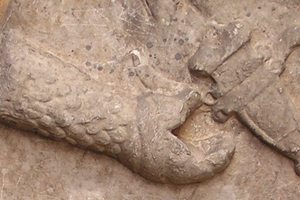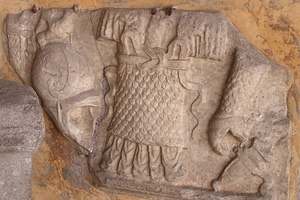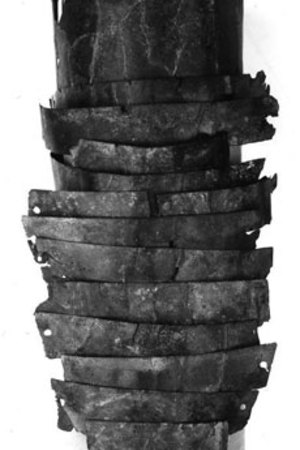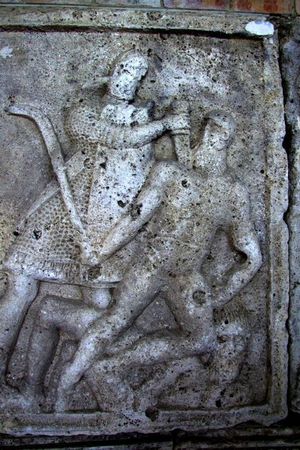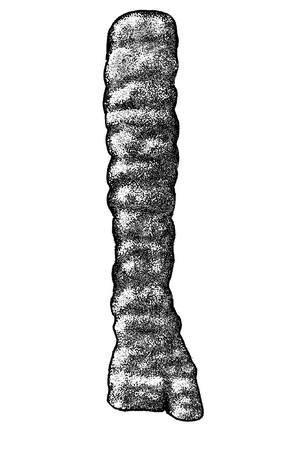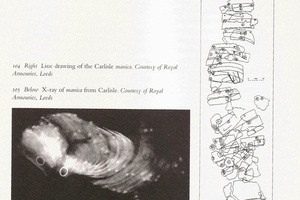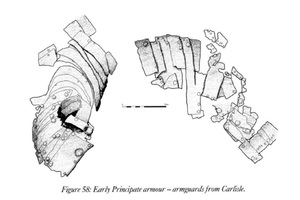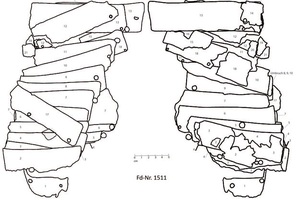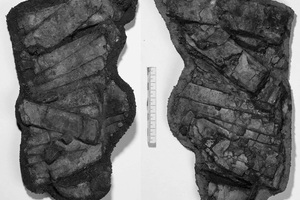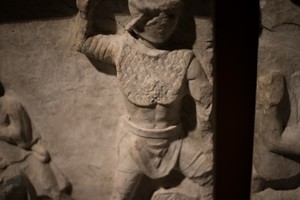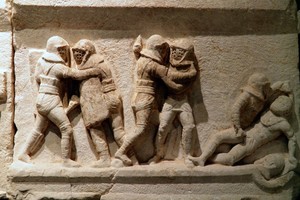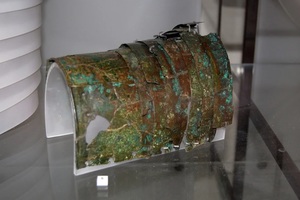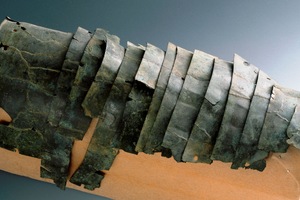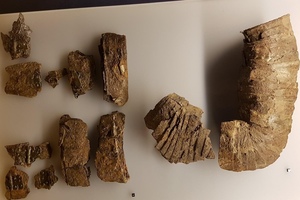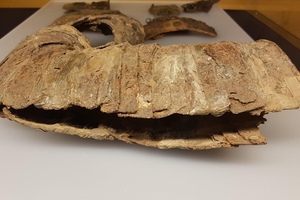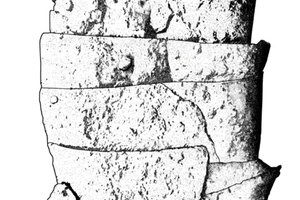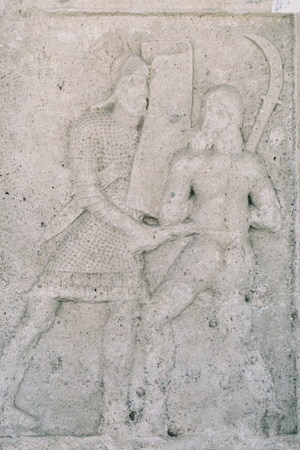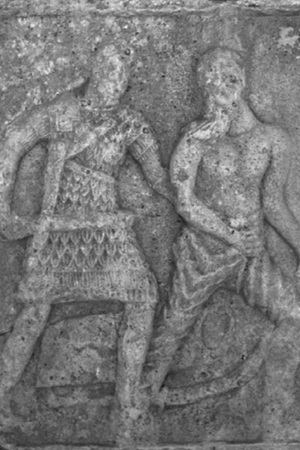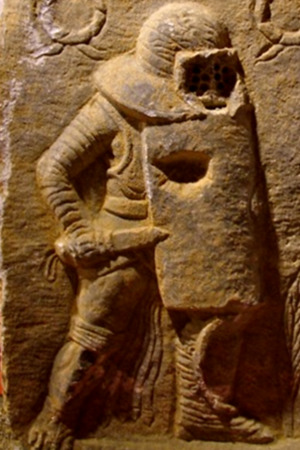Manica
Manica (Latin: manica) is a type of additional protective element of ancient Roman armor, consisting of several segments of metal elements. The appearance and protective properties of the manica are similar to the lorica segmentata, precisely because of its segmented structure. The name of the word manica came from the Latin manus ("hand") and literally means "sleeve".
Origin History
The first mentions of plates for hand protection are given by Xenophon, who describes the riders of the V—IV centuries BC. Instead of a shield, they wore a composite bracelet (Greek. χείρ). In the city temple of Athena Pergamon, there are images of bracelets, fragments of which were found during further excavations. Similar hand protections were mentioned among the Scythians, in the Kushan and Parthian states. Finds have been made in Halchayan (Uzbekistan), and Taxila (Pakistan). Another segmented bracelet was found in Ai-Khanum (Afghanistan), dating back to the middle of the second century AD. Like the Roman manicas, it has an expanded shoulder plate and 35 overlapping curved plates of smaller size, going "overlap". These finds are described in more detail in M. C. Bishop's book. Lorica Segmentata Volume I: A Handbook of Articulated Roman Plate Armour. — Armatura Press (pp. 18-21). From later sources on the segmented hand protection of other peoples, one can refer to Trajan's column, where Sarmatian armor is depicted.
Historians believe that the manicas came to Ancient Rome from gladiators, who due to the specific technique of combat, the protection of the leading hand with a weapon was particularly important. It is also often mentioned that the greatest role in the appearance of manicas in the Roman army was played by crupellarii - heavily armed gladiators of Gallic origin. Later, they gained widespread use in the Roman army during the Dacian Wars, as necessary protection against the slashing blows of the sickle-shaped swords - falxes. However, since archaeological finds are located throughout the Roman Empire, it should be concluded that they were used not only against the Dacians.
It's also worth noting another discovery, which can also be attributed to hand protection and in some way is a precursor to the manica - a scale glove from the bas-relief of Civita Castellana (Italian: Civita Castellana, Lazio region, Viterbo, Italy). The bas-relief has not been fully preserved, and it is hard to say exactly how much of the hand it covered. But nonetheless, it can be confidently said that this is a subtype of scale protection. Most likely, this was special officers' equipment, as indicated by the scale armor from the same bas-relief with reinforced shoulders and an officer's fabric belt (Lat. - cincticulus). Historians give a fairly wide dating of this bas-relief - from 1 BC, to the beginning of the 2nd century. It should be noted that during this period equipment in the Roman army changed particularly strongly, and in style, it is more characteristic of the Republican traditions of military affairs. However, there are other examples of somewhat archaic elements of equipment for the 1st century AD - a mosaic with a praetorian or the tombstone of centurion Marcus Favonius Facilis from the XX legion, whose armor is sometimes interpreted as a linothorax. This gives grounds to assume that such a version may also turn out to be correct.
Manica on Legionnaires
There is confirmation that the manica began to be used in the Roman army in 43-70 AD. This is told by the drawings from the tombstones of Sextus Valerus Severus, Gaius Annius Salutus - legionnaires of Legio XXII Primigenia from Mainz. On the tombstones, the manica is depicted as overlapping plates. Meanwhile, on Severus's manica, one can recognize eleven plates on the arm and four plates on the wrist. Interestingly, part of the bas-relief can be interpreted as a division of protection of the phalanges of the fingers and the thumb.
There are not so many archaeological finds. There are several items that were not immediately recognized as manicas. The first was found in Carnuntum - a Roman military camp at the crossroads of the Amber Road with the Danube. This manica was made of copper plates. The second manica was found in Newstead. It was originally mistakenly described by Robinson as thigh protection, most likely due to a lack of preserved plates.
There is also a manica from Carlisle. It is the most complete found iron manica, and its plates reach the wrists. X-ray analysis showed that at its end it should almost fully protect the hand.
Possibly in the Roman Empire there were several subtypes of manicas in terms of hand protection. Most likely they varied in their height and length, going differently onto the wrist and shoulder, and there was some customization for the owner and his main armor. Nevertheless, one can identify such common features as the arrangement of manica plates in "overlap", the absence of full closure around the hand and the widened upper plate.
Manica at auxiliaries
Manicae are often associated with legionnaires, such as on the Tropaeum Traiani and on two tombstones of legionnaires from Mainz. At least two sites of finds are legion camps. However, some fragments are also found in vexillation and auxiliary camps: Newstead, Carlisle, Richborough and Corbridge. An example of such a find from the Steinheshof is the manica, a Roman protective sleeve plate.
Manica was found on the junior camp site between the second and third construction phases of the frame barracks. Item length — 26.6 cm, width — 16.5 cm. It consists of 23 plates with a length of 8 to 16.2 cm, a width of 2.5 to 4.7 cm (average 3.3 cm), and a thickness of about 0.5 cm. The corners of the slightly trapezoidal segments are slanted. On the left side, there are traces of a break, indicating that the product was not preserved in full width.
In the lower corner of the right side of each plate there was a rivet pin made of non-ferrous metal (or a hole for it), similar-closer to the middle of the lower edge. No holes were found for attaching the lining. In total, 32 rivets were visible on the X-ray image, which served to attach the plates to leather straps, ensuring the mobility of the structure. Presumably there were three, not four, straps running along the arm. Thus, the initial length of the plates varied from 13.6 to 25.6 cm. The length of the plates decreased towards the wrist.
The Steinheshof specimen, according to ceramic finds, dates from the last third of the first century — the first third of the second century AD. This is the earliest archaeologically confirmed manica. It is now on permanent display at the Museum of Rome in Xanten (LVR Römermuseum Xanten).
Manica on Gladiators
In Rome, manicas first appeared precisely among gladiators, as they were extremely necessary for them due to the specific conditions of combat. Unlike legionnaires, there were many more possible variations of it. In addition to metallic, there was also a fabric version, similar in many ways to quilted armor. Sometimes another metallic manica was worn over the fabric one. The main advantage of this type was the ability to fully close the hand on all sides, which, considering the absence of fighting in formation, was especially important. The manicas also differed by the wide plate. There were options, like legionnaires - a not very wide shoulder plate not reaching the top, and even an oval plate for the whole shoulder. Sometimes the last plate not only widened but also had a form going beyond the shoulder in height - especially often such a type of manica was used by retiarii. It should be noted 2 types of gladiator manica, absent from legionnaires: chainmail and scale.
Such an element as a manica was noticed in the following types of gladiators: provocator, retiarius, murmillo, secutor, hoplomachus, Thracian, crupellarius, which speaks of the incredible prevalence of this element of protective equipment in gladiatorial games.
Reenactment
There are many types of manicas, and you need to make your choice depending on the image being reconstructed. For legionnaires, the choice is already - iron or brass (bronze), and exclusively its segmented view. Moreover, if the period being reconstructed is earlier than the middle of the first century AD, then the possibility of using this element of protective equipment by legionnaires is questioned. Gladiators do not have such problems with dating. Moreover, the variety is much larger - to the named types of manica, fabric, chainmail, scale are added.
Literature
- M. C. Bishop. Lorica Segmentata Volume I: A Handbook of Articulated Roman Plate Armour. — Armatura Press, 2002. (English)
- Connolly P. Greece and Rome. Encyclopedia of Military History / Translated by S. Lopukhov, A. Khromov.. - "Eksmo-Press". Moscow, 2000.
- M.C. Bishop. Roman Plate Armour. Osprey Elite, 2022.
Related topics
Legionnaire, Gladiator, Crupelarium, Lorica Segmentata

 Gallery
Gallery






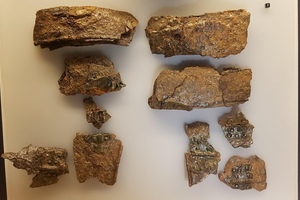 Iron manica. Found in Ulpia Traiana Sarmizegetusa. Muzeul National de Istorie a Transilvaniei. 2nd century AD
Iron manica. Found in Ulpia Traiana Sarmizegetusa. Muzeul National de Istorie a Transilvaniei. 2nd century AD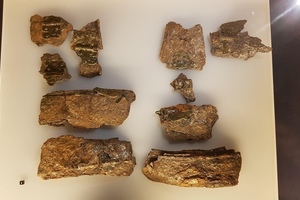 Iron manica. Found in Ulpia Traiana Sarmizegetusa. Muzeul National de Istorie a Transilvaniei. 2nd century AD
Iron manica. Found in Ulpia Traiana Sarmizegetusa. Muzeul National de Istorie a Transilvaniei. 2nd century AD